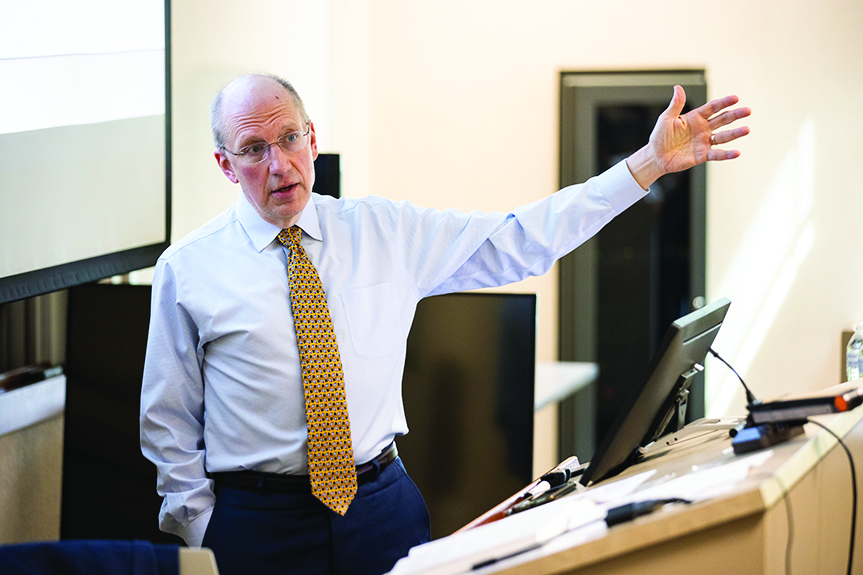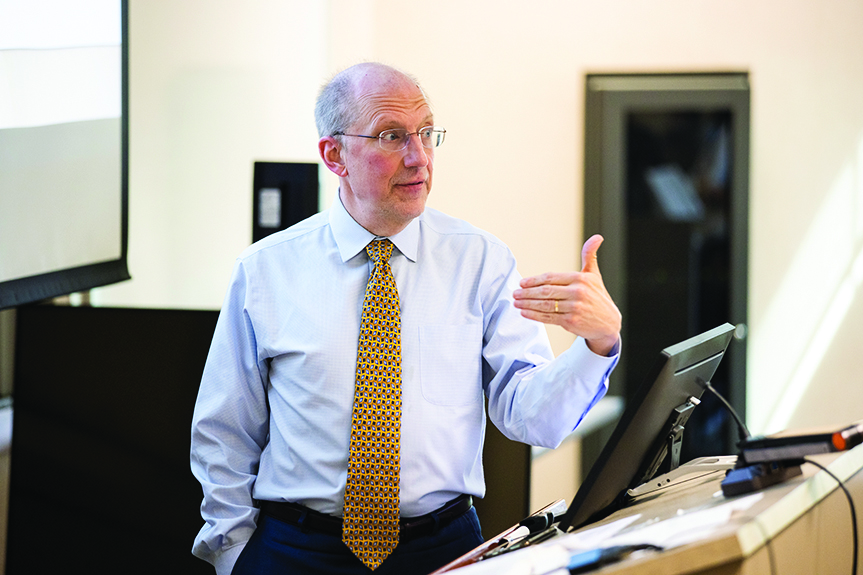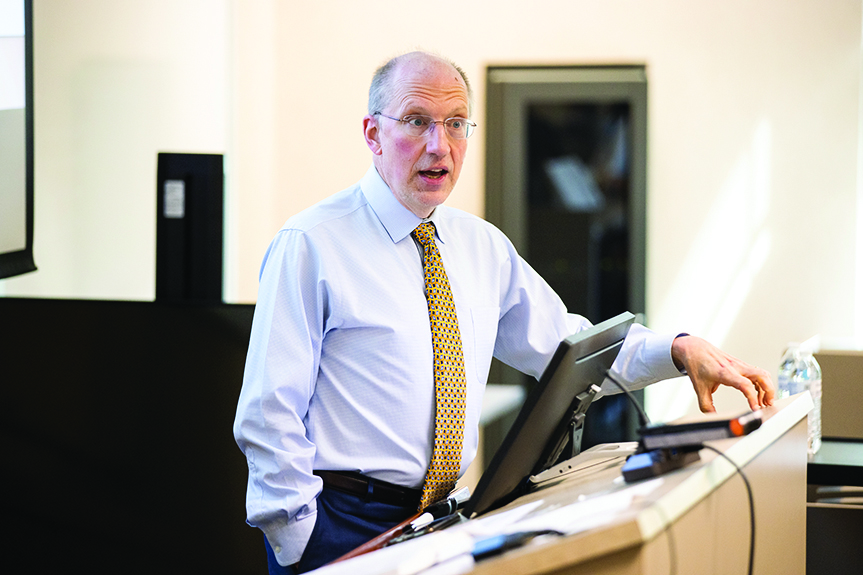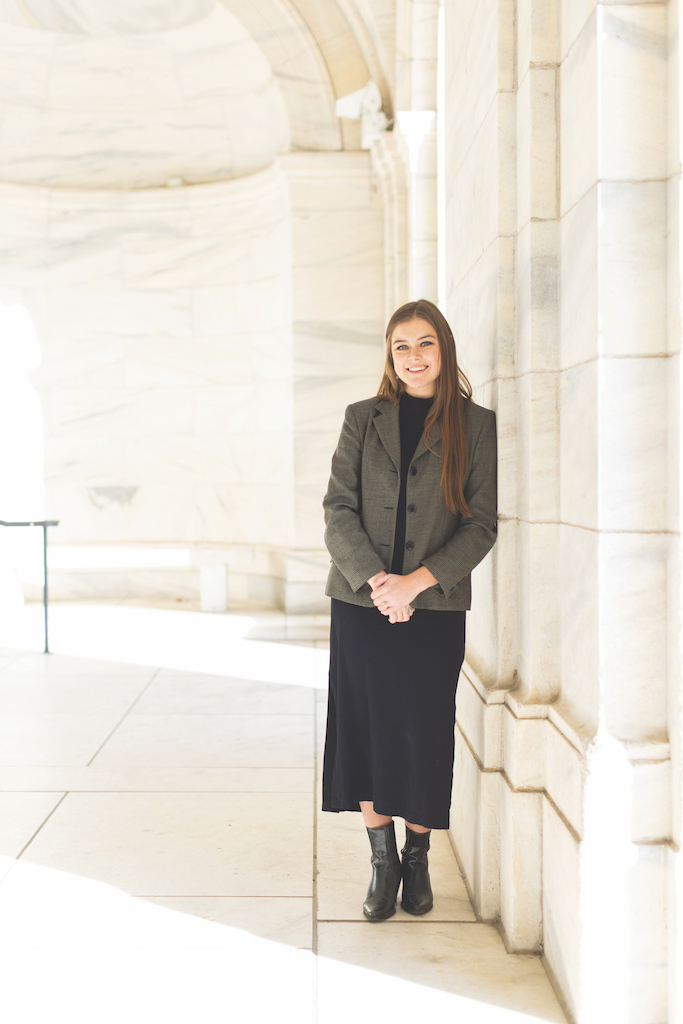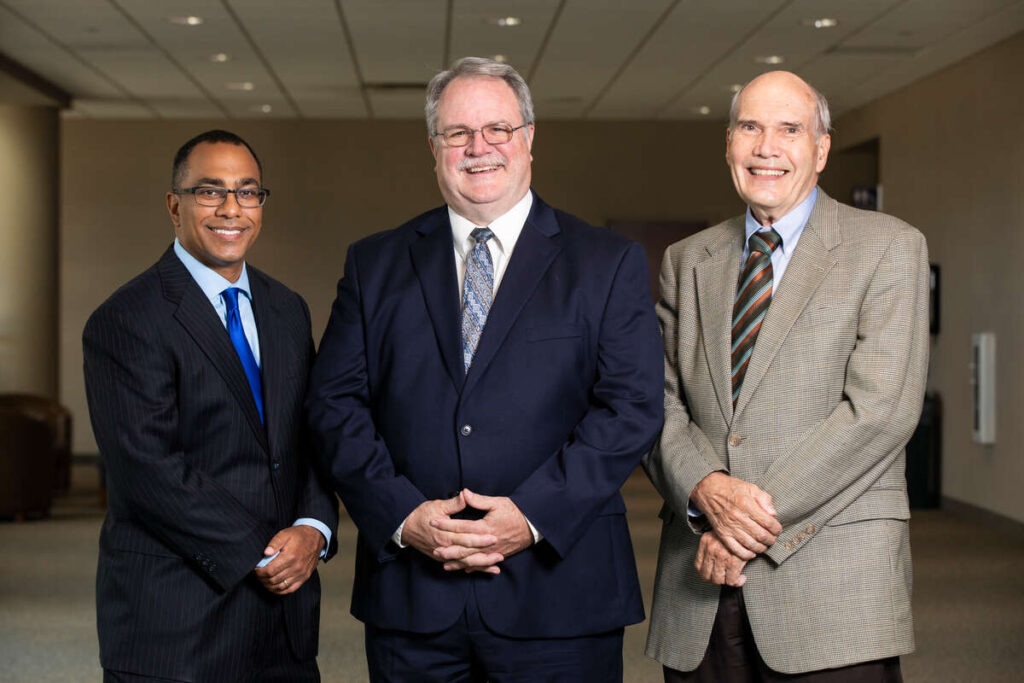A thought leader in the relationship between intellectual property rights, social justice and human development, Thomas Berg, James L. Oberstar Professor of Law and Public Policy, is the co-author of Patents on Life: Religious, Moral, and Social Justice Aspects of Biotechnology and Intellectual Property (Cambridge University Press, 2019). He is also an accomplished scholar in the area of religious liberty and the supervising attorney of the Interprofessional Center’s Religious Liberty Appellate Clinic. We asked Berg to share his thoughts on the roles morality, ethics and religion play within IP law.
Here’s what he had to say:
Why are you drawn to intellectual property (IP) law?
Intellectual property is endlessly fascinating, first because it covers the most interesting and important technologies and creative forms of our day: genetic engineering, software and artificial intelligence, creative content in all forms. As Mark Getty, the head of the stock photo company Getty Images, said: “Intellectual property is the oil, the dynamic economic force of the 21st century.” Any lawyer advising businesses today needs to know a little about IP – about trademarks at the very least.
The subject is also intellectually engaging and challenging because you can’t just see naturally the boundaries of a piece of intellectual property (an invention, a creative expression) the way you can see the shape of a bicycle (personal property) or the fence around land (real property). Because IP’s boundaries are less obvious, they’re constantly affected by considerations like how to ensure IP advances knowledge and respects human dignity. Those issues are inherent in the field, even if we often think of it as technical.
What role do morality, ethics and religion play within IP law?
We tend to deny that morality plays a role in what’s protected by patents or other IP. But morality is right below the surface. When there’s a generic version of a drug under patent, or file sharing of copyrighted music, the IP holders say “Theft!” They invoke morality. And morality and social justice explicitly appear in the global claims for preserving access to affordable medicines (most recently, COVID vaccines) in the face of IP rights that can drive up the cost of those medicines.
Social justice claims also explicitly arise when corporations use the traditional knowledge of Indigenous peoples, or the genetic materials from plants in their locations, to help develop patentable medicines, agricultural products and so forth. The claim there is that corporations should disclose such uses and provide fair compensation to such groups, who have often been exploited by developed nations in the past.
How did you come to be involved in editing the book Patents on Life: Religious, Moral and Social Justice Aspects of Biotechnology and Intellectual Property (2019)?
I’ve been interested in the overlap of ethical concepts and IP for a while. If morality and social justice matter to IP, then so does religion, because in much of the world religion shapes society’s conception of justice. For example, in Muslim nations, patent law could help advance innovation, but it likely won’t take deep root unless it’s apparent how it’s consistent with justice as Islamic thought understands it.
We’ve had roundtables and symposia at St. Thomas on these issues since 2009; we’ve helped lead exploration of the field. Then came the chance to do a trans-Atlantic conference co-sponsored by the Murphy Institute at St. Thomas and the Von Hugel Institute at St. Edmund’s College, Cambridge University, another institute interested in the societal implications of Catholic thought. The book came out of that conference.
Why was it important to publish the book?
We think the book is a unique resource for legal, policy and religious actors, in several ways. First, it touches on a range of moral-social issues about gene patents: At what point are you patenting naturally occurring things? What about patenting morally troublesome manipulations of genes? At what point (if any) do exclusive IP rights harm access to medicines, like COVID-19 vaccines, in developing nations — or at what point do patents on seeds or crops wrongly achieve too much control over farmers’ practices? How exactly should we provide Indigenous communities fair returns on use of their traditional knowledge? Second, the book brings close, nuanced discussion of both legal and religious concepts to this subject. Finally, the book’s contributors come from both the U.S. and Europe; and Europe has some different rules about morality in patent law that are quite interesting.
In the book, you say, "For religious thought to contribute effectively, it must be more informed and sophisticated than it has been..." How so?
Back in 1995, a group of almost 200 religious leaders launched a campaign against any kind of gene patents on the ground that they involved “owning life” and “playing God.” But by 2013, when the Supreme Court decided in the Myriad case that some forms of genetic material could be patented – but not others – only one amicus brief in the case was from a religious group. The religious input fizzled because it completely lacked nuance. Patents, when properly defined, work to encourage the invention and commercialization of new things. They don’t give total ownership rights, and gene patents in particular only apply to artificially created material that’s not in the form found in the human body.
Gene patents do raise important moral questions like: Are there certain technological manipulations we shouldn’t be encouraging through patents? Patents generally encourage innovation by allowing companies to recoup their R&D costs, but if they give exclusivity that’s too broad, will they end up making biotech advances available only to those able to pay? But those questions require nuanced analysis that chapters in our book aim to provide.
How should the U.S. patent-granting process be changed to include moral and social justice considerations? Is change happening?
In the U.S. process currently, it’s more a matter of resisting efforts to eliminate some of the existing, proper limits on gene patents. The courts have long ruled, and the Supreme Court recently reaffirmed, that you can’t patent a naturally occurring thing; even if you discovered a basic sequence of genes, you didn’t invent it and shouldn’t have control over it. But there’s a bill in Congress —supported by both Democrats and Republicans — to eliminate that particular limit, which would be a bad idea.
On the global stage, the main issue is how to ensure that when companies use an Indigenous community’s traditional knowledge or biological resources to obtain a patent, they disclose that use and provide fair compensation. That requirement would be strengthened if it were integrated into the international patent system — so that you had to make such disclosures in order to get a patent — and negotiations on adding such a requirement are moving forward in international forums after many delays.
Do you have any follow-up projects or activities planned in this area of study?
Trademark law also raises issues of morality and justice including for vulnerable groups; I’m interested in exploring those. I’d also like, long term, to articulate an overall, big-picture Christian theological approach to issues about intellectual property and the ownership of creativity and innovation.
For now, I want to help continue to grow IP programs at St. Thomas. In recent years we’ve added courses on patent prosecution and on international IP, a Trademark Clinic and student teams in two national advocacy competitions, where we’ve had great success. We aim to build on those advances by integrating the help of our accomplished and enthusiastic alums who practice IP law, and by strengthening our connections with the practicing IP bar in the Twin Cities and elsewhere. I believe IP law has a bright future at St. Thomas.
This story is featured in the fall 2021 issue of St. Thomas Lawyer.

